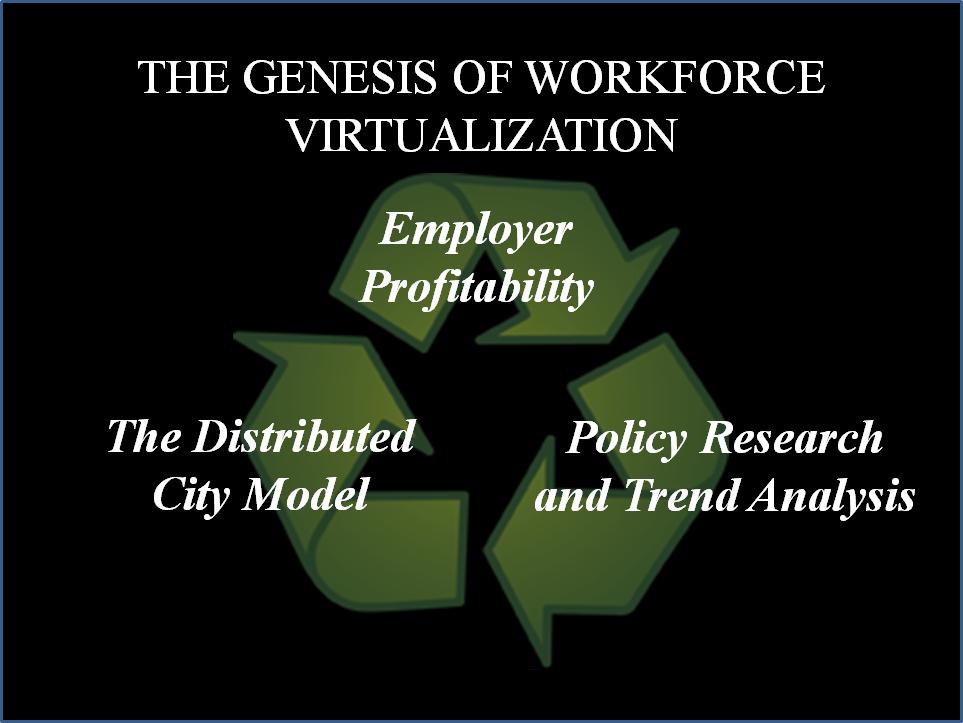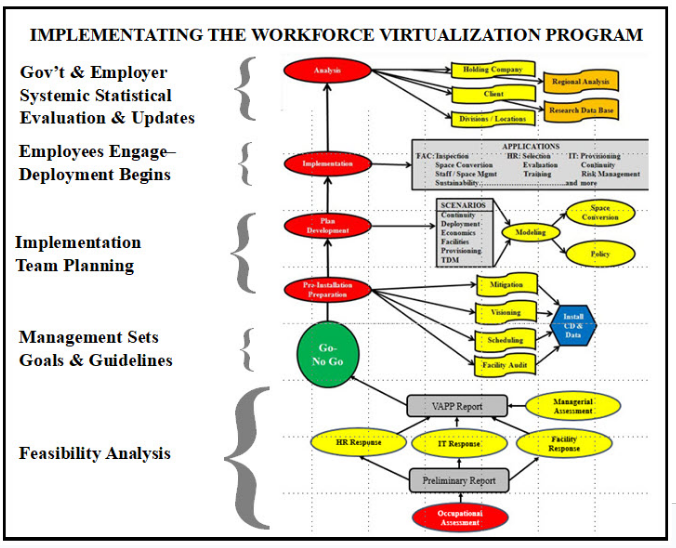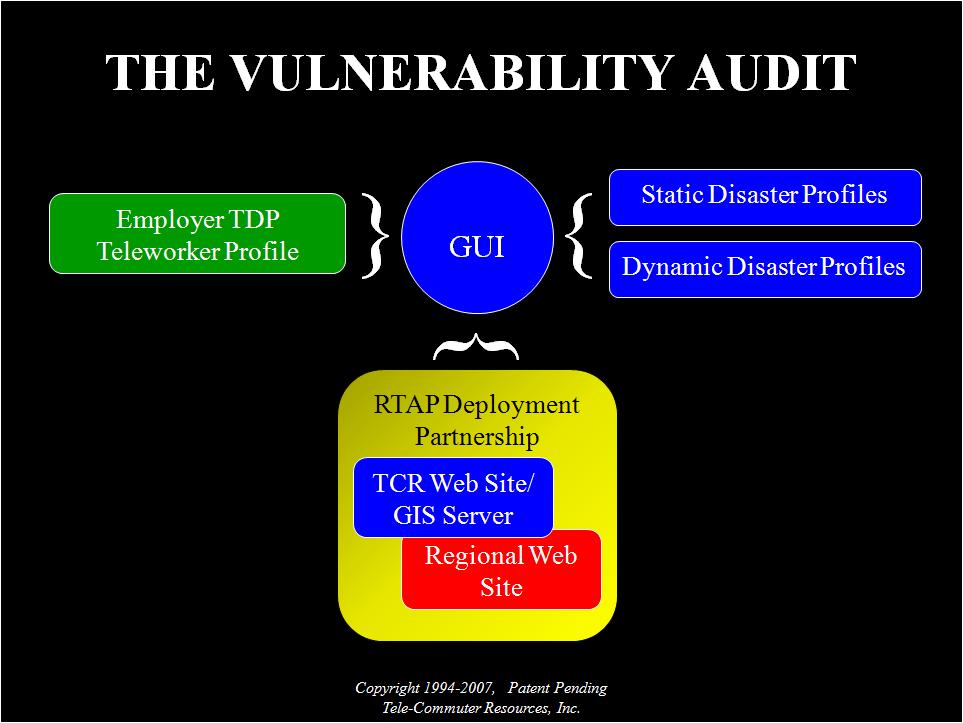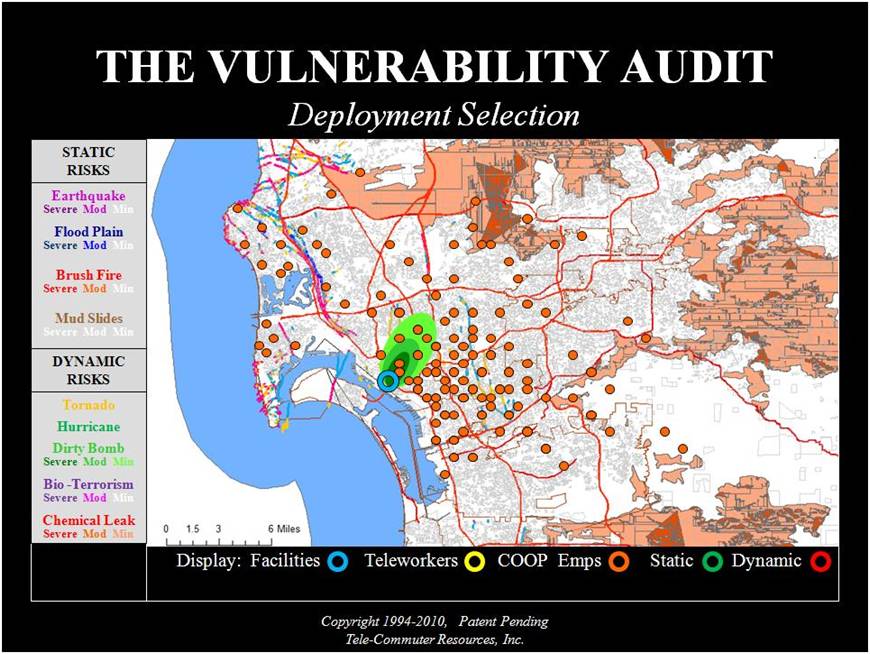A Strategic Approach Results in an Optimized Outcome
Since the development of the telework concept in the 1970’s, the ad hoc method was dominant. It was promoted by the consultant/trainers, the HR departments, government agencies etc. Many critics were concerned that telework was not achieving its goals for space reduction, performance evaluation, traffic reduction, financial benefits, etc. When the pandemic hit, the ad hoc approach was not able to support the level of deployments required- no one was prepared. And they still aren’t
Empty roads and empty buildings were a testimony to the fiscal benefits of telework, but “People People” wanted everyone back to work primarily because neither the employers nor the developers had prepared for the transition into the Age of Virtualization; no one had a virtual workforce management plan. Even as the back-to-the-office movement abandons all of the benefits of a STRATEGIC telework deployment, the typical management approach is to have everyone arbitrarily come back to the office on a one or two day basis.
After the pandemic:
Employees preferred working from home
The Community enjoyed the reduction of congestion and pollution
The government was not happy because ridership was down, gas tax revenue was down and future real estate taxes were at risk
The downtowns were equally unprepared
The Real Estate people were not happy, and
The employers were confused.

The TCR approach focused on employer benefits, the development of a national policy and operational research base and the societal impacts of virtualization, starting with telecommuting.
Assess the occupations to determine which can be done remotely and how many days would be appropriate
Standardize how remote workers should be equipped
How many remote workers are needed to virtually support the organization in case of fire or other disruptive events
Select these continuity workers based upon GIS data to ensure that they are not in the same risk zone (via the Vulnerability Audit)
Adopt an evaluation method (should be 6) to ensure performance
Establish a deployment sequence for space conversion to convert facilities to support teleworkers during their on-site days; “Right-Size” their facilities.

Plans and Implements an Integrated Solution to Fulfill Managerial Goals and Guidelines
The initial challenge was how to identify options to revitalize small town America. The first obvious choice was to promote telework. The dominant method was ad-hoc and employee-focused. It failed to provide a true ROI, examine job re-engineering, continuity and facility impacts among other issues. Seeking a strategic deployment that would encourage workers to move to rural communities, we began development of a tool based upon Continuity of Operations, facility “right-sizing” and enhanced operational and fiscal performance.
TCR also wanted to aggregate employer Deployment Plans to support the Metropolitan Planning Organization’s efforts for emission, congestion, energy reduction, infrastructure planning and TDM forecasts. These powerful applications are equally important, and unique to the Workforce Virtualization Program:
Documenting planned trip reductions, by route,
Understanding the trends and impacts of employer Deployment Plans
Forecasting reductions in congestion, emissions and energy consumption– vehicle and facility
Quantify a credible ROI
Virtually support Continuity
Analyze and “Right-size” facilities
Develop a database for policy and operational research
Profile employer Deployment Plans and support regional infrastructure, congestion management etc.


Today, the media proclaims “We are back to normal” i.e., congestion, pollution, energy consumption and the rarely noted impacts on our neighborhoods.
Unfortunately, ignoring the benefits of the strategic telework deployment fails to capture a nationally significant economic opportunity. No dictatorial society would allow their workers to work remotely and therefore the Deployment’s ROI, (facility reduction, performance, recruitment, retention) and other long-documented benefits are lost. The enhanced security infrastructure required to support a strategically deployed workforce on a national basis, would further enhance the country’s security and national competitiveness. And all done with accountability.
1. The failure of the ad hoc approach to telework has been a disaster at many levels…and it is due to two major flaws
a. The C-Suite has never engaged. A virtual workforce requires a Deployment Management Plan, and
b. The ad hoc approach focused on employees that wanted to telework rather than focusing on the occupations best suited for deployment
2. And the societal loss is also two fold:
a. The opportunity for eligible teleworkers to relocate to Small Town America as part of their Continuity Plan, and
b. The competitive advantage the U.S. would have by capturing all of the cost reductions and enhanced performance potential
A Deployed Continuity Workforce is critical to an Organization’s Viability and Performance
When TCR learned of Hurricane Ike’s impact on Galveston Island, it identified a significant challenge to the deployment of continuity workers, i.e., if the continuity workers are located within the same disaster zone of their facility, the employer would lose both his continuity team and his facility. This was an unacceptable risk for the employer’s very survival.
TCR developed a proprietary database:
Nationally identify all static, dynamic, and manmade threats that could impact an employer's viability and determine their "destruction zone" parameters
Each region was profiled to reflect which threats were applicable
Employers select the relevant threats and a graphic is generated showing the impact footprint of each threat surrounding each of their facilities
The Workforce Virtualization Program would then support the identification of employees who are eligible for a teleworking assignment, compatible with the continuity role and are outside of the destruction zone, and
The workforce Virtualization Program would then complete the training, provisioning, assessment, evaluation, and other requisite tasks to ensure the Continuity Plan is complete- this dual role ensures that the Continuity Plan is exercised daily.
While the Telework effort is detailed here, similar assessmenet tools have been designed for telemedicine, Higher Ed curriculums community development etc.


Phone Number
Jfsanger@telecommuter.org
4315 Virginia Avenue St Paul, MN 55126
The Information Age Community incorporates AI in many of its tools and strategies. It truly allows society to embrace the many benefits of the Information Age and the Freedom of Residential Choice that it provides. All six community types are affected by this reversal of the 200 year Industrial Age mindset and each must build upon the benefits of the old even as they adopt the new opportunities.
©All rights reserved,2025 Tele-Commuter Resources,Inc. Design and development by VibgyorWeb Technologies.